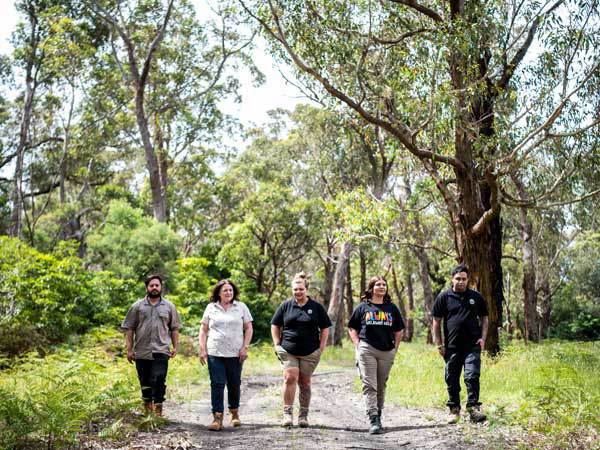“Unbeatable Impact”: Almost 66,000 Australians United For Environment Thanks to Landcare Led Bushfire Recovery Grants

October 3:
Landcarers across Australia are celebrating their outstanding achievements for bushfire affected environments and communities following the completion of the landmark $14 million Landcare Led Recovery Grants Program.
Managed in partnership between Landcare Australia, the National Landcare Network and the peak Landcare State and Territory organisations, the program saw almost 66,000 Australians- including over 10,000 volunteers, working together to deliver 111 community-driven projects in bushfire affected areas across the east coast and South Australia.
With project successes ranging from Upper Snowy Landcare discovering the best eucalyptus seed sources for future bushfire recovery efforts through climate testing, to the South Australian Museum’s research data leading to the Kangaroo Island Assassin Spider being listed as Critically Endangered under the EPBC Act, the program has had an overwhelmingly positive impact across some of Australia’s most heavily bushfire affected regions.
Landcare Australia CEO Dr Shane Norrish applauded the outstanding results, saying that it demonstrated the incredible power of landcare and its partners across the country.
“Forming effective partnerships is what landcare does best, and the Landcare Led Bushfire Recovery Grants program really highlights our unbeatable impact when we unite to take action,” said Dr Norrish.
“By bringing together a diverse range of expertise and experience from multiple stakeholders, this program has delivered practical, innovative and science driven projects utilising cutting-edge technology including artificial intelligence, drone monitoring and DNA science.”
“This program has proved invaluable to bushfire recovery for countless species, environments and communities. I could not be more impressed and look forward to seeing what the partnerships established through this program continue to achieve in future.”
As part of the program, a joint study undertaken by University of Melbourne and Federation University into the social impacts of post-disaster environmental work indicated that landcare provided an opportunity to extend the reach of environmental recovery activities undertaken on public lands through their connections with landholders. Participants in the study identified the wide range of activities they had been involved in to support the recovery of the fire affected environment. This included monitoring fauna using motion sensor cameras and water sampling for eDNA, revegetating burnt areas, implementing pest control programs and providing appropriate supplementary food sources and shelter for native animals that had survived.
“Disaster recovery is often a long, complex and difficult process for those impacted. Our research found that community based environmentally focussed groups like landcare often embody evidence informed psychosocial support principles, such as helping people feel connected, hopeful and providing opportunities to actively participate in the recovery of the places they love,” said lead researcher Dr Kate Brady.
CEO of the National Landcare Network Jim Adams said that because of the positive community impact and scale of environmental recovery achieved, the program served as a testament of the strength of the community landcare movement.
“Our movement is driven the tens of thousands of landcarers across Australia who share their expertise and bring communities together to take action for their environments, and this program has really shown how effectively we can act at scale in disaster response and recovery,” said Mr Adams.
“The Landcare Led Bushfire Recovery Grants program showcases just how integral local landcare groups and volunteers are in delivering large-scale, nationwide projects and what can be achieved with additional support and funding.”
“The overwhelming success of these landcare-led projects shows the model is well placed to be scaled as required and tackle future disaster responses and deliver real action on the pressing climate and environmental challenges of our times,” said Mr Adams.



